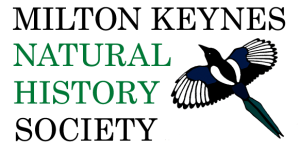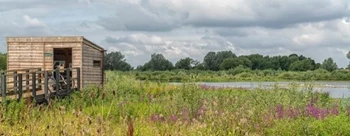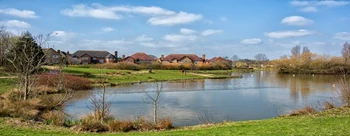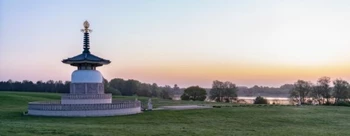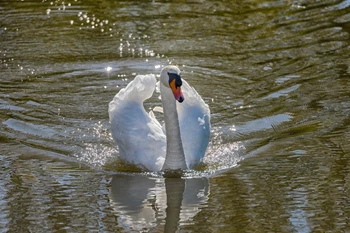MKNHS: Winter 2022
So far, the winter this year has been relatively mild, and as a result, many of the trees have remained green for longer, the grass has been continuing to grow and some plants are prematurely springing into action with new shoots. This mild start has also influenced migration and hibernation patterns for wildlife.
As the weather gets colder though, more migrant birds seek shelter in the UK including regular winter visitors such as Redwing and Fieldfare. The Floodplain Forest Nature Reserve in the north of Milton Keynes is a good place to find these birds. The picture below was taken at Floodplain Forest as the Redwing feasted on berries. Rowan and Hawthorn are two of this bird’s favourite berries and they can also be found on the ground looking for worms or fallen apples. The bird is similar to a Thrush but has visible red patches under the wings.

Redwing in Floodplain Forest Nature Reserve
A much rarer winter visitor is the Slavonian Grebe, which is not a normal bird to see in the area but has visited Milton Keynes parks sites more recently in 2021 (Furzton Lake), 2014 (Willen Lake) and 2013 (Tongwell Lake). The Photo below was taken at Furzton Lake, where the Grebe stayed for a while, often being chased around by larger Great Crested Grebes.
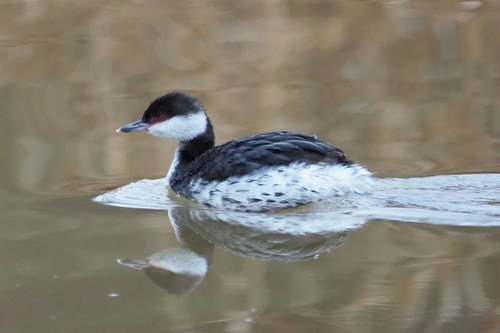
Slavonian Grebe in Furzton Lake
Caldecotte Lake had an interesting winter visitor last year and the year before, as a Great Northern Diver spent time there and was seen catching Crayfish. The photo below shows the Great Northern Diver on the upper part of Caldecotte Lake South. There is a chance that this bird might well return in 2022, so it is worth keeping an eye open to see if you can spot it.
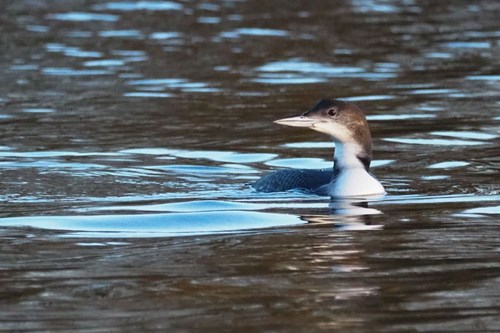
Great Northern Diver in Caldecotte Lake South
Something to look out for at this time of the year are Starling murmurations. This is when flocks of Starlings gather in the sky swooping and weaving through the air in synchrony producing an incredible sight. A good location to look for Starling murmuration is Willen Lake. If you aim to be there a little bit before sunset, you might get the chance to see this amazing spectacle. You may also see flocks of Lapwings at Willen Lake flying together, if you want to spot the difference, they are larger than Starlings and have rounder wings.
To prepare for your walks this year, you might like to see some of the wildlife sightings from winter last year, you can access the Milton Keynes Natural History Society’s sightings page.
Although it might be cold at this time of year, the barer trees make it easier to spot birds as they can’t hide as easily in leaves. This can make it a simpler task to identify the bird but can also mean that they see you sooner, so moving slowly can help to get a clear view. Listening out for bird sounds can also be helpful as often you can hear them before you see them and as birds have different calls and songs it is even possible to identify them without needing to see them. If you are interested in learning more about different bird calls and songs, then the Xeno Canto website can be useful as it has a collection of crowd-sourced recordings to listen to. You could even upload some of your own recordings to add to the impressive selection that's available.
If you are looking for some winter wildlife inspiration, then Milton Keynes Natural History Society are running weekly talks at the Cruck Barn and has monthly weekend walks to get out and about in Milton Keynes looking for interesting wildlife and plants.




